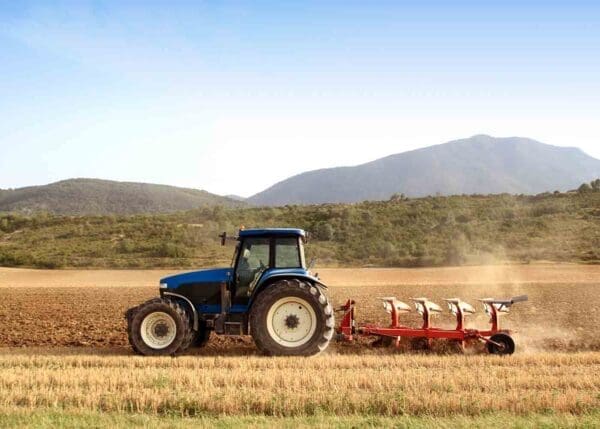01. Asbestos Risk for Farmers
How Are Farmers Exposed to Asbestos?
Farmers may have experienced asbestos exposure from using farming equipment, machinery and soil. Asbestos was frequently added to machine parts to improve heat resistance and durability.
When farmers repair machinery, they may disturb asbestos fibers. Airborne asbestos puts individuals nearby at risk of inhaling or ingesting the mineral. Asbestos fibers in the body may cause farmers and other agricultural workers to develop an asbestos-related disease.
Before the 1980s, many farm buildings were also built with asbestos construction materials. Asbestos was common in construction because of its strength and fireproofing characteristics.
For example, old farmhouses, silos and barns may contain asbestos construction materials. Today, laws and regulations prevent manufacturing new asbestos products. However, asbestos-containing materials may still exist in old structures.
What Asbestos Products Put Farmers at Risk?
For decades, asbestos was added to a variety of farming and agriculture products. In the 1970s, researchers linked asbestos exposure to asbestosis, lung cancer and mesothelioma. As a result, many asbestos products were discontinued.
Farmers may have been exposed to asbestos from:
- Asbestos cement
- Brake linings
- Brake pads
- Clutches
- Exhaust pipes
- Floor tiles
- Gaskets
- Insulation
- Roofing materials
- Sealants
- Siding
- Wallboards
Several companies manufactured asbestos products used in the farming and agriculture industry. Farmers often used these products in farming equipment and machinery.
Some companies are also responsible for mining the asbestos added to products. For example, W.R. Grace mined asbestos-contaminated vermiculite used in farming products.
Asbestos in Vermiculite
Vermiculite is a natural mineral often used in the agriculture industry. Some vermiculite may be contaminated with asbestos.
For several decades, asbestos-contaminated vermiculite was mined in Libby, Montana. From the 1920s to 1990, the Libby mines produced 80% of the world’s vermiculite.
As a result, many agricultural products were made with asbestos-contaminated vermiculite. Farmers may have experienced asbestos exposure from contaminated vermiculite in:
- Fertilizer
- Floorboards
- Potting soil
- Wallboards
Asbestos-containing vermiculite and other materials are dangerous when disturbed. Airborne asbestos fibers may be inhaled or ingested and lead to an asbestos-related illness.
Farmers and At-Risk Trades
A variety of farmers and agricultural workers may have experienced asbestos exposure. At-risk trades in the farming industry include:
- Agricultural equipment mechanics
- Agricultural equipment operators
- Dairy farmers
- Farmhands
- Poultry farmers
- Ranchers
- Sharecroppers
- Sheep, goat or cattle farmers
- Vegetable farmers
Asbestos exposure was also a risk for family members. If farmers and other workers brought asbestos into the home, their loved ones may have experienced secondhand exposure. This was common among those who laundered asbestos-ridden clothing or swept asbestos dust.
02. Mesothelioma Risk for Farmers
Mesothelioma Risk for Farmers
Farmers who experienced past asbestos exposure may develop asbestosis, lung cancer or mesothelioma.
In 1998, a study of health hazards among agricultural workers documented cases of respiratory disease. The study noted an increased risk of respiratory morbidity and mortality among farmworkers.
After initial asbestos exposure, mesothelioma may take up to 50 years to develop. Farmers who came in contact with asbestos products in the past may still develop the disease.
Farmers diagnosed with mesothelioma or another related disease due to asbestos exposure may be eligible for financial compensation. A mesothelioma attorney can help farmers and their loved ones determine their most favorable legal options.







